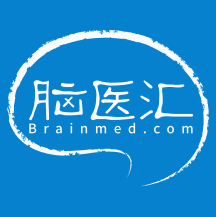Journal of Neurotrauma
本篇文献由机器智能翻译
Traumatic Brain Injury and Alzheimer’s Disease Biomarkers: A Systematic Review of Findings from Amyloid and Tau Positron Emission Tomography
01.创伤性脑损伤和阿尔茨海默病生物标志物: 淀粉样蛋白和Tau正电子发射断层扫描结果的概况
Traumatic brain injury (TBI) has been discussed as a risk factor for Alzheimer's disease (AD) due to its association with AD risk and earlier cognitive symptom onset. However, the mechanisms behind this relationship are unclear. Some studies have suggested TBI may increase pathological protein deposition in an AD-like pattern; others have failed to find such associations. This review covers literature that uses positron emission tomography (PET) of β-amyloid (Aβ) and/or tau to examine individuals with a history of TBI who are at increased risk for AD due to age. A comprehensive literature search was conducted on January 9, 2023, and 26 resulting citations met inclusion criteria. Common methodological concerns included small samples, limited clinical detail about participants' TBI, recall bias due to reliance on self-reported TBI, and an inability to establish causation. For both Aβ and tau, results were widespread but inconsistent. The regions that showed the most compelling evidence for increased Aβ deposition were the cingulate gyrus and cuneus/precuneus. Evidence for elevated tau was strongest in the medial temporal lobe, entorhinal cortex, precuneus, and frontal, temporal, parietal, and occipital lobes. However, conflicting findings across most regions in both Aβ- and tau-PET studies indicate the critical need for future work in expanded samples and with greater clinical detail to offer a clearer picture of the relationship between TBI and protein deposition in older individuals at risk for AD.
由于创伤性脑损伤 (TBI) 与AD风险和早期认知症状发作有关,因此已被讨论为阿尔茨海默病 (AD) 的危险因素。然而,这种关系背后的机制尚不清楚。一些研究表明,TBI可能会增加病理蛋白沉积; 其他人则未能发现这种关联。这篇综述涵盖了使用 β-淀粉样蛋白 (a β) 和/或tau的正电子发射断层扫描 (PET) 检查具有TBI病史的文献,这些个体由于年龄而增加了AD的风险。2023年1月9日进行了全面的文献检索,26篇引文符合纳入标准。常见的方法学问题包括样本量小,参与者TBI的临床细节有限,由于依赖自我报告的TBI而导致的回忆偏差以及无法确定因果关系。对于a β 和tau,结果广泛但不一致。显示a β 沉积增加的最有说服力的证据的区域是扣带回和楔叶。在内侧颞叶,嗅皮层,楔叶以及额叶,颞叶,顶叶和枕叶中,tau升高的证据最强。然而,在a β-和tau-PET研究中,大多数地区的发现却相互矛盾,因此迫切需要在扩大的样本中进行未来的工作,并提供更多的临床细节,以更清楚地了解TBI与老年患者中蛋白质沉积之间的关系。
REF: Dybing KM, Vetter CJ, Dempsey DA, Chaudhuri S, Saykin AJ, Risacher SL. Traumatic Brain Injury and Alzheimer's Disease Biomarkers: A Systematic Review of Findings from Amyloid and Tau Positron Emission Tomography. J Neurotrauma. 2025;42(5-6):333-348. doi:10.1089/neu.2024.0055 PMID: 39639808 PMCID: PMC11971548
由人工翻译修正
Characterizing the Effect of Repetitive Head Impact Exposure and mTBI on Adolescent Collision Sports Players’ Brain with Diffusion Magnetic Resonance Imaging
磁共振弥散张量成像表征头部反复打击和mTBI对青少年碰撞运动员大脑的影响
Athletes in collision sports frequently sustain repetitive head impacts (RHI), which, while not individually severe enough for a clinical mild traumatic brain injury (mTBI) diagnosis, can compromise neuronal organization by transferring mechanical energy to the brain. Although numerous studies target athletes with mTBI, there is a lack of longitudinal research on young collision sport participants, highlighting an unaddressed concern regarding cumulative RHI effects on brain microstructures. Therefore, this study aimed to investigate the microstructural changes in the brains' of high school rugby players due to repeated head impacts and to establish a correlation between clinical symptoms, cumulative effects of RHI exposure, and changes in the brain's microstructure. Repeated head impacts during a rugby season may adversely affect the structural organization of the brain's white matter. The observed diffusion changes, closely tied to SCAT5 symptom burden, stress the profound effects of seasonal head impacts and highlight individual variability in response to repetitive head impact exposure. To better manage sports-related mTBI and guide return-to-play decisions, comprehensive studies on brain injury mechanisms and recovery post-mTBI/RHI exposure are required.
碰撞运动中的人员经常遭受反复的头部撞击 (RHI),尽管不足以进行临床轻度创伤性脑损伤 (mTBI) 诊断,但可能会通过将机械能转移到大脑而损害神经元。许多研究针对mTBI的运动员,但缺乏对年轻碰撞运动参与者的纵向研究,突显了RHI对大脑微结构累积影响尚未解决的担忧。因此,本研究旨在研究由于反复的头部撞击而导致的高中橄榄球运动员大脑的微观结构变化,并建立临床症状,RHI暴露的累积效应与大脑微观结构变化之间的相关性。在橄榄球赛季中,反复的头部撞击可能会对脑白质的结构组织产生不利影响。观察到的扩散变化与SCAT5症状密切相关,强调了头部撞击的深远影响,并突出了应对重复头部撞击暴露的个体差异。为了更好地管理与运动相关的mTBI并指导重返比赛的决定,需要对mTBI/RHI暴露后的脑损伤机制和恢复进行全面研究。
REF: Tayebi M, Kwon E, McGeown J, et al. Characterizing the Effect of Repetitive Head Impact Exposure and mTBI on Adolescent Collision Sports Players' Brain with Diffusion Magnetic Resonance Imaging. J Neurotrauma. 2025;42(5-6):349-366. doi:10.1089/neu.2024.0064 PMID: 39714998
由人工翻译修正
Differences in Network Functional Connectivity in Response to Sub-Symptomatic Exercise Between Elite Adult Athletes after Sport-Related Concussion and Healthy Matched Controls: A Pilot Study
运动相关脑震荡后精英成年运动员与健康对照之间对运动的网络功能连接的差异: 一项初步研究
Resting-state electroencephalography (rsEEG) has developed as a method to explore functional network alterations related to sport-related concussion (SRC). Although exercise is an integral part of an athlete's return to sport (RTS) protocol, our understanding of the effects of exercise on (impaired) brain network activity in elite adult athletes is limited. However, this information may be beneficial to inform recovery and RTS progressions. Recording (128-channel) rsEEG datasets before and after a standardized moderate aerobic bike exercise test, this study aimed to explore functional connectivity patterns in whole brain and relevant functional networks in a group of elite adult athletes post-injury compared with healthy matched controls. Although all athletes reached their exercise goal without exacerbation of symptoms, the impact of exercise on the CAN appears to be greater for the SRC athletes, than matched healthy controls. The potential clinical significance of this finding is that it may have revealed an underlying mechanism for the cardiac autonomic alterations post-injury. This study merits further investigation into the CAN, as a network of interest more closely aligned with the clinical features (e.g., autonomic dysfunction) during athletes' RTS.
静息态脑电图 (rsEEG) 已发展为一种探索与运动相关脑震荡 (SRC) 相关的功能网络改变的方法。尽管训练是运动员重返运动 (RTS) 协议的组成部分,但训练对成年精英运动员 (受损) 大脑网络活动的影响的理解是有限的。然而,该信息可以有益于识别恢复和RTS进展。在标准化的中度有氧自行车运动测试之前和之后记录 (128通道) rsEEG数据集,本研究旨在探索与健康对照组相比,一组成年精英运动员受伤后的全脑功能连接模式和相关功能网络。尽管所有运动员都达到了运动目标而没有加重症状,但运动对SRC运动员的影响似乎比健康对照组更大。这一发现的潜在临床意义在于,它可能揭示了损伤后心脏自主神经改变的潜在机制。这项研究值得对CAN进行进一步研究,因为它是一个与运动员RTS期间的临床特征 (例如,自主神经功能障碍) 更紧密相关的网络。
REF: Coenen J, van den Bongard F, Delling AC, Reinsberger C. Differences in Network Functional Connectivity in Response to Sub-Symptomatic Exercise Between Elite Adult Athletes after Sport-Related Concussion and Healthy Matched Controls: A Pilot Study. J Neurotrauma. 2025;42(5-6):367-378. doi:10.1089/neu.2023.0629 PMID: 39648797
由人工翻译修正
Identifying Growth Hormone Deficiency in Brain-Injured Patients: The Quality of Life Scale-99
确定脑损伤患者的生长激素缺乏症: 生活质量量表-99
Traumatic brain injury (TBI) is frequently associated with hypopituitarism. The hypothalamic-pituitary axis appears to be susceptible to the same forces that cause injury to the parenchyma of the brain. Following even a mild TBI (mTBI), patients may suffer transient or permanent decreases in anterior pituitary hormones, including somatotropin (growth hormone [GH]), gonadotropins (luteinizing hormone and follicle-stimulating hormone), thyrotropin, and adrenocorticotropic hormone, with the most frequent long-term deficiency being GH deficiency (GHD). GHD is common after mTBI and is often the cause of persistent post-concussive symptoms a year or more post-injury. GHD is known to cause physical and cognitive fatigue, cognitive inefficiency, metabolic changes, and a range of psychological symptoms. Confusing the picture is that some symptoms of GHD are also common to brain injury itself. To facilitate the detection of GHD when comorbid with TBI, we utilized a new symptom inventory, the Quality-of-Life Scale-99 (QoLS-99), and administered it to a cohort of chronic TBI subjects with and without GHD, distinguished using the insulin tolerance test (ITT). Based on the findings, we recommend that clinicians inquire about libido, insomnia, and body image as potential markers for GHD. Furthermore, given the amenability of patients with GHD to growth hormone replacement therapy, we strongly encourage clinicians and basic scientists to develop interventions for the large and underserved population of patients with TBI with comorbid GHD.
创伤性脑损伤 (TBI) 经常与垂体功能减退有关。下丘脑-垂体轴似乎易受导致脑实质损伤的影响。即使轻度TBI (mTBI) 后,患者垂体前叶激素,包括生长激素 (生长激素 [GH]),促性腺激素 (促黄体激素和促卵泡激素),促甲状腺激素和促肾上腺皮质激素,最常见的长期缺乏症是GH缺乏症 (GHD)。GHD在mTBI后很常见,并且通常是损伤后一年或更长时间持续脑震荡后症状的原因。已知GHD会导致身体和认知乏力,认知效率低下,代谢变化以及一系列心理症状。令人困惑的是,GHD的一些症状也是脑损伤本身常见的。为了促进与TBI合并症时GHD的检测,我们使用了新的症状清单,即生活质量量表-99 (QoLS-99),并将其施用于患有和不患有GHD的慢性TBI受试者队列,使用胰岛素耐量测试 (ITT) 进行区分。基于这些发现,我们建议临床医生询问性欲,失眠和身体形象作为GHD的潜在标志物。此外,鉴于GHD患者对生长激素替代疗法的适应性,我们强烈鼓励临床医生和基础科学家为合并GHD的TBI患者开发干预措施。
REF: Barnard S, Gattu R, Baragi VM, Alzohaili O, Benson R. Identifying Growth Hormone Deficiency in Brain-Injured Patients: The Quality of Life Scale-99. J Neurotrauma. 2025;42(5-6):379-390. doi:10.1089/neu.2024.0114 PMID: 39681340
由人工翻译修正
Outcomes after Traumatic Brain Injury with and Without Computed Tomography
计算机断层扫描与否对创伤性脑损伤预后的影响
Our recent improved understanding of traumatic brain injury (TBI) comes largely from cohort studies of TBI patients with indication for computed tomography (CT). Using CT head as an inclusion criterion may overestimate poor outcomes after TBI with Glasgow Coma Scale (GCS) 13-15. We aimed to compare outcomes after TBI in adults who had a head CT scan (with negative findings) versus those who had no CT when presenting to an emergency department. Adults with and without head CT have mostly comparable outcomes from TBI with GCS = 13-15. Requiring CT by clinical indication for study entry may not create problematic selection bias for outcome research.
我们最近对创伤性脑损伤 (TBI) 认识的提高主要来自对有计算机断层扫描 (CT) 指征的TBI患者的队列研究。使用CT作为纳入标准可能会高估格拉斯哥昏迷量表 (GCS) 13-15的TBI患者的不良结果。我们的目的是比较有头部ct扫描 (阴性结果) 的成年人与那些在急诊科就诊时没有CT的成年人在TBI后的结局。头颅CT检查与否的成年人在GCS = 13-15的TBI中的结果大多相当。根据临床适应症要求CT进行研究可能不会对结果研究产生有问题的选择偏差。
REF: Mikolić A, Shi S, Panenka W, et al. Outcomes after Traumatic Brain Injury with and Without Computed Tomography. J Neurotrauma. 2025;42(5-6):391-398. doi:10.1089/neu.2024.0332 PMID: 39470625
由人工翻译修正
Impact of Post-Traumatic Epilepsy on Mental Health and Multidimensional Outcome and Quality of Life: An NIDILRR TBIMS Study
创伤后癫痫对精神卫生以及生活质量的影响: NIDILRR TBIMS研究
Traumatic brain injury (TBI) and subsequent post-traumatic epilepsy (PTE) often impair daily activities and mental health (MH), which contribute to long-term TBI-related disability. PTE also affects driving capacity, which impacts functional independence, community participation, and satisfaction with life (SWL). However, studies evaluating the collective impact of PTE on multidimensional outcomes are lacking. Thus, we generated a model to investigate how PTE after moderate-to-severe (ms)TBI affects TBI-associated impairments, limits activities and participation, and influences SWL.The implications underscore the crucial need for effective PTE management strategies during the first year post-TBI to minimize the adverse impact on factors influencing multidimensional year-2 participation and SWL outcomes. Addressing transportation barriers is warranted to enhance the well-being of those with PTE and msTBI, emphasizing a holistic approach. Further research is recommended for SEM validation studies, including testing causal inference pathways that might inform future prevention and treatment trials.
创伤性脑损伤 (TBI) 和创伤后癫痫 (PTE) 通常会损害日常活动和精神卫生 (MH),从而导致长期的TBI相关残疾。PTE还会影响驾驶能力,从而影响功能独立性,社区参与和生活满意度 (SWL)。然而,缺乏评估PTE对多维结果的集体影响的研究。因此,我们生成了一个模型来研究中度至重度 (ms)TBI后的PTE如何影响TBI相关损伤,限制活动和参与以及影响SWL。这些影响强调了在TBI后的第一年期间对有效的PTE管理策略的关键需求。必须解决功能障碍,以增强PTE和msTBI患者的福祉,并强调整体方法。建议对SEM验证进行研究,包括测试可能为将来的预防和治疗试验提供信息的因果推断途径。
REF: Awan N, Weppner J, Kumar RG, et al. Impact of Post-Traumatic Epilepsy on Mental Health and Multidimensional Outcome and Quality of Life: An NIDILRR TBIMS Study. J Neurotrauma. 2025;42(5-6):399-416. doi:10.1089/neu.2024.0117 PMID: 39761035
由人工翻译修正
Diffuse Axonal and Vascular Pathology in the Gyrencephalic Brain after High-Energy Blunt Injury: Clinicopathological Correlations Involving the Brainstem
高能钝器伤后脑回的弥漫性轴索损伤和血管病理: 涉及脑干的临床病理相关性
Traumatic brain injury (TBI) after high-energy, behind helmet blunt trauma (BHBT) is an important but poorly understood clinical entity often associated with apnea and death in humans. In this study, we use a swine model of high-energy BHBT to characterize key neuropathologies and their association with acute respiratory decompensation. Our findings indicate that high-energy, blunt-force impact TBI causes diffuse lesions in axons and blood vessels associated with poor outcomes. They also suggest that axons and vessels may have distinct responses to tissue deformation and that commonly used markers of vascular pathology, for example, in diagnostic radiology, cannot be used as direct surrogates of diffuse axonal injury. In concert, our study underscores the role of regional axonal and vascular injuries in the brainstem in acute respiratory decompensation after high-rate blunt TBI, even in the presence of head protection; it also emphasizes the importance of detailed clinicopathological work in complex brains in the field of TBI.
高能量,头盔钝性创伤 (BHBT) 后的脑损伤 (TBI) 是一种重要但知之甚少的临床事件,通常与人类呼吸暂停和死亡有关。在这项研究中,我们使用高能BHBT的猪模型来表征关键的神经病理学及其与急性呼吸代偿失调的关系。我们的研究结果表明,高能量钝力冲击TBI会导致轴突和血管弥漫性病变,并导致不良预后。他们还建议轴突和血管可能对组织变形有不同的反应,并且通常使用的血管病理学标记物,例如在诊断放射学中,不能用作弥漫性轴突损伤的直接替代物。我们的研究强调了脑干区域轴突和血管损伤在高速钝性TBI后急性呼吸失代偿中的作用,即使在头部保护的情况下也是如此; 它还强调了在TBI领域中详细的临床病理工作的重要性。
REF: Alexandris AS, Rafaels K, Horsmon M, et al. Diffuse Axonal and Vascular Pathology in the Gyrencephalic Brain after High-Energy Blunt Injury: Clinicopathological Correlations Involving the Brainstem. J Neurotrauma. 2025;42(5-6):417-436. doi:10.1089/neu.2024.0306 PMID: 39723444
由人工翻译修正
A Combination of Low Doses of Lithium and Valproate Improves Cognitive Outcomes after Mild Traumatic Brain Injury
低剂量的锂和丙戊酸盐的组合可改善轻度创伤性脑损伤后的认知结果
In the present study, we tested if the combination of low doses of lithium (1 mEq/kg or 0.5 mEq/kg) plus valproate (20 mg/kg) administered for 3 days after a mild fluid percussion injury can improve hippocampal-dependent learning and memory. Our data show that the combination of low-dose Li + VPA improved spatial learning and memory, effects not seen when either drug was administered alone. In addition, postinjury Li + VPA treatment improved recognition memory and sociability and reduced fear generalization. Postinjury Li + VPA also reduced the number of anti-ionized calcium binding adaptor molecule 1 (Iba1)-positive microglia counted using a convolutional neural network, indicating a reduction in neuroinflammation. These findings indicate that low-dose Li + VPA administered acutely after mTBI may have translational utility to reduce pathology and improve cognitive function.
在本研究中,我们测试了低剂量锂 (1 mEq/kg或0.5 mEq/kg) 加丙戊酸盐 (20 mg/kg) 的组合在轻度流体冲击损伤后3天内是否可以改善海马依赖性学习和记忆。我们的数据表明,低剂量Li VPA的组合改善了空间学习和记忆,而单独使用任何一种药物均未观察到这种效果。此外,伤后Li VPA治疗可改善识别记忆和社交能力,并减少恐惧泛化。损伤后Li VPA还减少了使用卷积神经网络计数的抗离子钙结合衔接分子1 (Iba1) 阳性小胶质细胞的数量,表明神经炎症减少。这些发现表明,在mTBI后急性给予低剂量的Li VPA可能具有减少病理和改善认知功能的转化效用。
REF: Redell JB, Maynard ME, Hylin MJ, et al. A Combination of Low Doses of Lithium and Valproate Improves Cognitive Outcomes after Mild Traumatic Brain Injury. J Neurotrauma. 2025;42(5-6):437-453. doi:10.1089/neu.2024.0311 PMID: 39463282 PMCID: PMC11971536
由人工翻译修正
Predictive Blood Biomarkers of Targeted Intervention for Chronic Mental Health Symptoms following Traumatic Brain Injury
脑外伤后慢性精神卫生症状靶向干预的预测性血液生物标志物
The purpose of this study was to assess the performance of predictive blood biomarkers for responsiveness to targeted treatments for chronic psychological issues years after traumatic brain injury (TBI). Combinations of pre-intervention blood biomarkers were able to differentiate responders from nonresponders in both post-traumatic stress and overall psychological health domains.
这项研究的目的是评估预测性血液生物标志物对创伤性脑损伤 (TBI) 后数年针对慢性心理问题的靶向治疗的反应性。血液生物标志物的组合能够在创伤后压力和整体心理健康领域区分响应者和无响应者。
REF: Eagle SR, Svirsky SE, Puccio AM, et al. Predictive Blood Biomarkers of Targeted Intervention for Chronic Mental Health Symptoms following Traumatic Brain Injury. J Neurotrauma. 2025;42(5-6):e454-e460. doi:10.1089/neu.2024.0245 PMID: 39323312 PMCID: PMC11971543
由人工翻译修正












